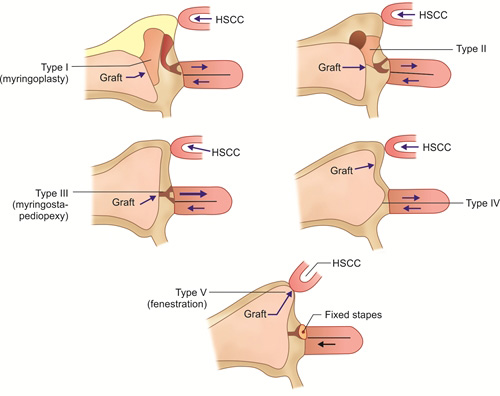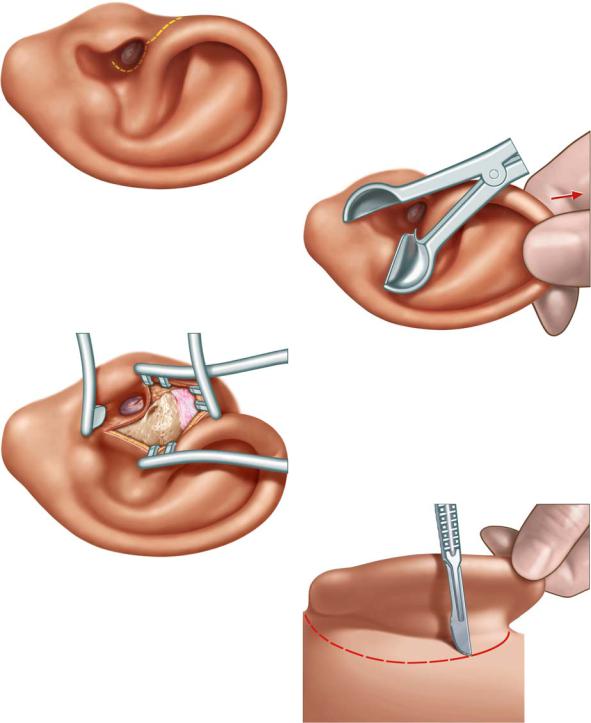TYPES OF TYMPANOPLASTY
Definition: Tympanoplasty is a surgery to eradicate disease in the middle ear cleft and to re-construct the hearing mechanism with or without mastoid surgery with or without tympanic membrane grafting.
Classification of Tympanoplasty:
- Type I: Defect in the tympanic membrane is repaired by a graft after checking the mobility and status of the ossicular chain. It is also called Myringoplasty.
- Type II: There is perforation of tympanic membrane with erosion of malleus or part of incus.
- Type II a: Graft is kept touching the malleus remnant, incus or Incudo-stapedial joint.
- Type II b: Here the incus is also diseased. The body of the incus is refashioned to fit into the stapes head. The short process of incus goes under the handle of malleus.
- Type III: Malleus and Incus are absent.
- Type III a: Low facial ridge: Graft is kept below the level of malleus touching the stapes head, called Myringostapediopexy.
- Type III b: High facial ridge: Graft not directly touching the stapes head but below the level of malleus.
- Type IV: Only the footplate of stapes is present, exposed to the external ear, and graft is placed in between oval and round windows. A narrow middle ear, cavum minor, is made to have an air pocket around the round window. Sound waves act directly on the footplate while round window has been shielded.
- Type V: Stapes footplate is fixed but round window is functioning. Here another window is created on lateral semicircular canal and covered with a graft. It is also called fenestration operation.
- Type VI: Sono-Inversion: All sound waves enter through the round window keeping the oval window covered (reverse direction).
Most common grafts used in Tympanoplasty:
- Temporalis fascia - most common.
- Cartilage.
- Perichondrium.
- Fascia Lata.
Incision approach for Tympanoplasty:
- Endaural approach.
- Postaural approach.
- Endomeatal (Transcanal) approach.
Anesthesia for Tympanoplasty:
- Usually done in local anesthesia.
- General anesthesia can be used in uncooperative patients.
Techniques of placement of Graft in Tympanoplasty:
- Underlay technique.
- Overlay technique.
- Interlay technique.
- Double breasting technique.



